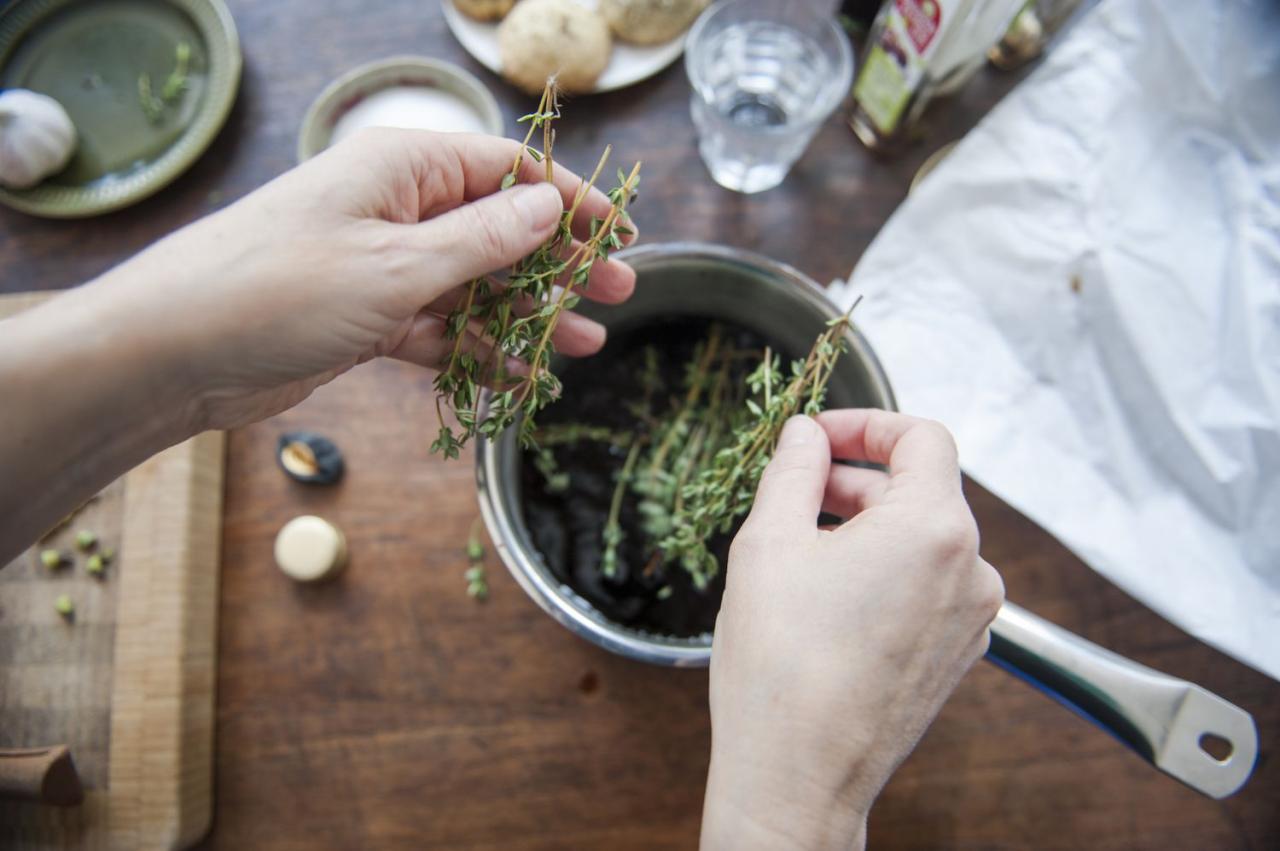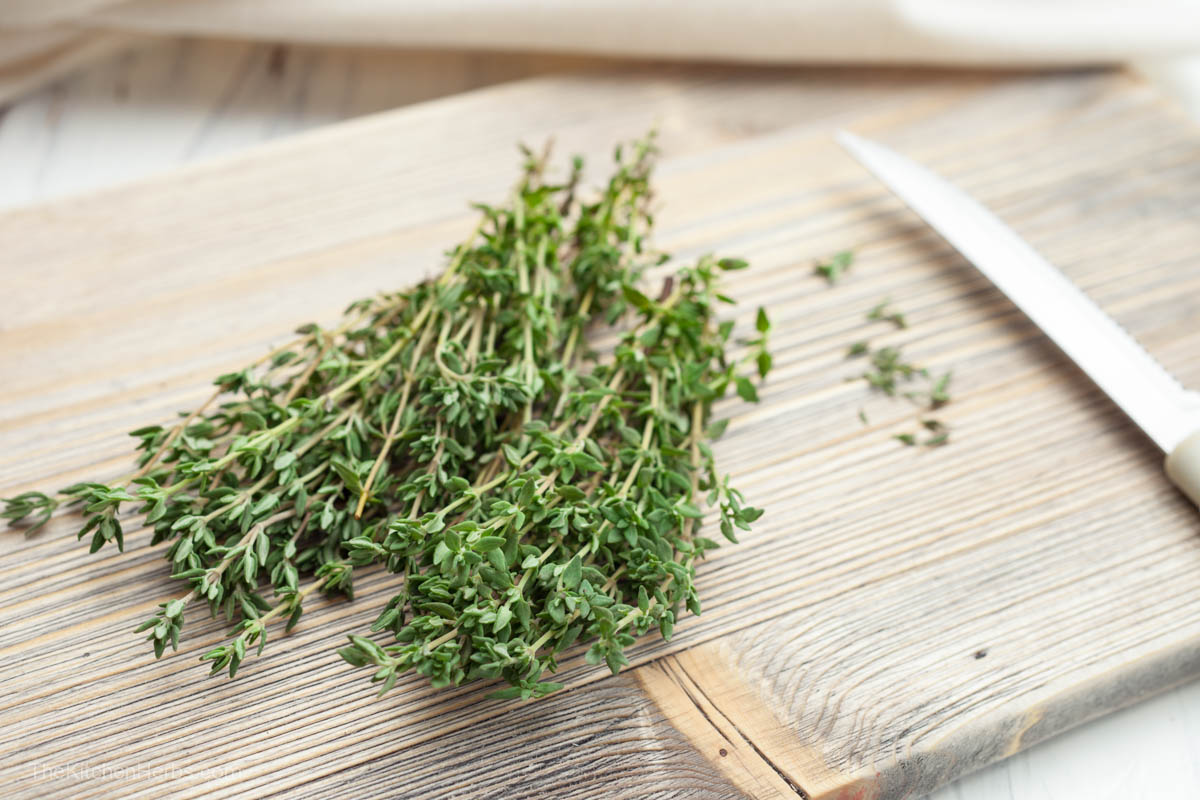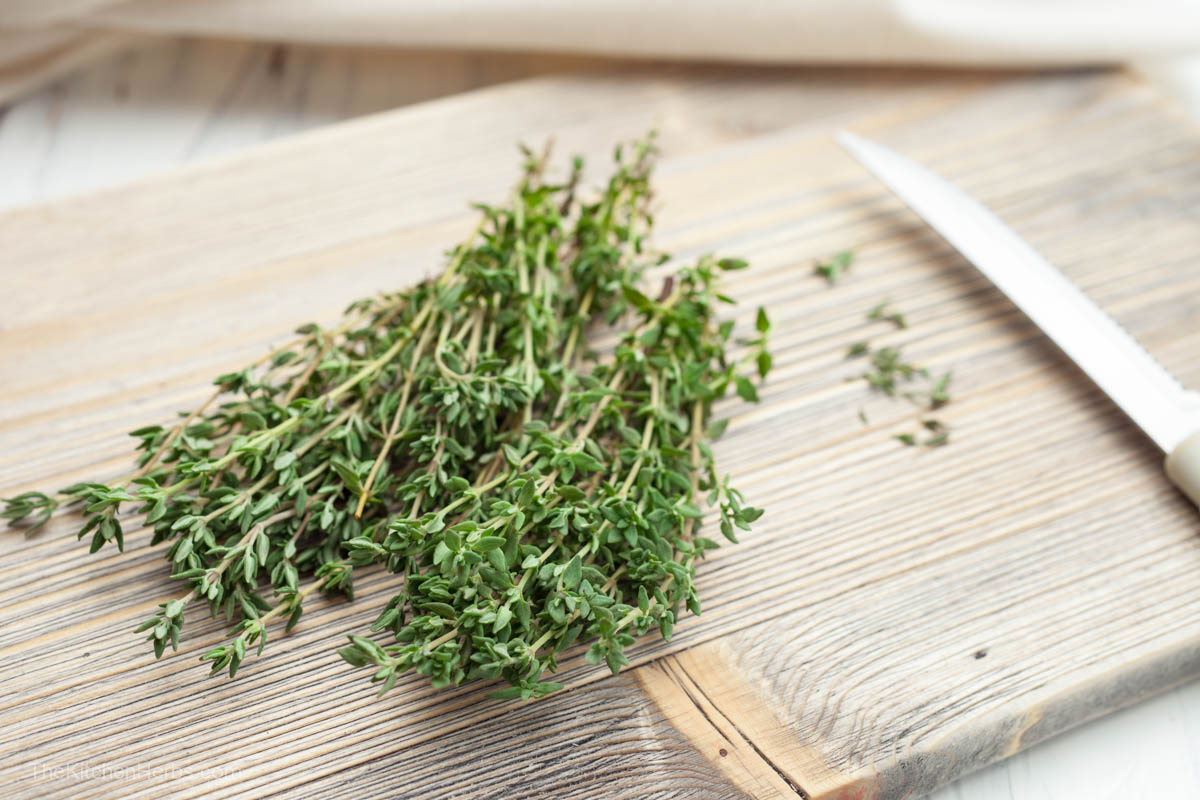The Complete Guide to Using Thyme Piece in Your Cooking – The Complete Guide to Using Thyme in Your Cooking takes you on a journey from the herb’s botanical origins to its versatility in the kitchen. Discover the various thyme varieties, their distinct flavor profiles, and the nutritional benefits they offer.
This guide provides comprehensive insights into cultivating thyme, whether in a garden or a container, ensuring you have a fresh supply of this aromatic herb. From incorporating thyme into dishes to pairing it with other flavors, you’ll learn the secrets of unlocking its full potential.
Explore creative uses for thyme beyond traditional cooking, including its application in herbal teas, infusions, and natural remedies. This guide equips you with the knowledge and techniques to elevate your culinary skills and infuse your dishes with the unique flavor of thyme.
Introduction to Thyme: The Complete Guide To Using Thyme Piece In Your Cooking
Thyme, a fragrant herb with a long and storied history, has been a culinary staple for centuries. Its versatility, distinct flavor, and numerous health benefits have made it a beloved ingredient in kitchens worldwide. From ancient Roman kitchens to modern-day gourmet restaurants, thyme has consistently played a vital role in enhancing the taste and aroma of countless dishes.
Botanical Origins and History
Thyme, scientifically known as
- Thymus vulgaris*, belongs to the mint family
- Lamiaceae*. It is native to the Mediterranean region, where it thrives in sunny, dry climates. The herb’s name is derived from the Greek word “thymos,” meaning “courage” or “strength,” reflecting its historical use as a symbol of bravery and resilience.
The ancient Greeks and Romans utilized thyme for its medicinal properties, believing it to possess healing powers. They incorporated it into baths, ointments, and even used it to ward off evil spirits. Thyme’s culinary journey began in the Middle Ages, when it was widely used as a flavoring agent and preservative.
During this period, thyme was commonly added to meat dishes, soups, and stews, enhancing their taste and extending their shelf life.
Varieties of Thyme
The world of thyme boasts a diverse array of varieties, each offering a unique flavor profile. Some of the most popular and widely cultivated types include:
- Common Thyme (Thymus vulgaris): The most common variety, known for its pungent, earthy, and slightly citrusy flavor. It is the quintessential thyme used in traditional cooking.
- Lemon Thyme (Thymus citriodorus): As its name suggests, this variety possesses a distinct lemon aroma and flavor, making it a delightful addition to fish, poultry, and salads.
- French Thyme (Thymus vulgaris var. ‘French’): This variety is characterized by its slightly sweet and floral notes, often used in French cuisine, particularly in Provençal dishes.
- Caraway Thyme (Thymus herba-barona): This unique variety boasts a distinctive caraway-like flavor, adding an interesting twist to soups, stews, and savory dishes.
- Creeping Thyme (Thymus serpyllum): Known for its low-growing habit and slightly peppery flavor, creeping thyme is often used as a ground cover in gardens and as a culinary herb in salads and dressings.
Nutritional Benefits of Thyme
Beyond its culinary applications, thyme offers a range of nutritional benefits. It is a rich source of antioxidants, including flavonoids and phenolic compounds, which help protect the body against oxidative stress and inflammation. Thyme also contains vitamins, minerals, and essential oils that contribute to overall health and well-being.
Our comprehensive guide, “The Complete Guide to Using Thyme Piece in Your Cooking,” explores the versatility of this fragrant herb, from its subtle flavor profile to its various culinary applications. For those seeking a deeper understanding of thyme’s transformative power, we recommend exploring our companion article, ” Thyme Piece: The Herb That Can Transform Any Dish ,” which delves into the specific ways thyme can elevate your dishes.
With this combined knowledge, you’ll be equipped to confidently incorporate thyme into your culinary repertoire.
“Thyme is a potent source of antioxidants, which can help protect against oxidative stress and inflammation, promoting overall health and well-being.”
Cultivating Thyme
Thyme, a fragrant herb, thrives in well-drained soil with plenty of sunlight. You can cultivate thyme in your garden or in containers, making it a versatile herb for both novice and experienced gardeners. This section provides a guide to help you grow healthy and flavorful thyme plants.
Soil Conditions and Sunlight
Thyme prefers well-drained soil, as it is susceptible to root rot in wet conditions. Sandy loam soil with a pH between 6.0 and 7.0 is ideal. You can improve soil drainage by adding compost or sand. Thyme thrives in full sun, receiving at least six hours of direct sunlight per day.
It can tolerate some shade, but it will grow more slowly and produce less foliage.
Planting Thyme
- Direct Sowing:Thyme seeds can be directly sown in the garden in spring or fall. Sow the seeds thinly and cover them lightly with soil. Keep the soil moist until the seeds germinate, which typically takes 10 to 14 days.
- Transplanting:Thyme seedlings can be purchased from nurseries or garden centers and transplanted into the garden or containers. Space the seedlings 12 to 18 inches apart. Dig a hole slightly larger than the root ball, loosen the roots, and backfill with soil.
Watering Thyme
Thyme is relatively drought-tolerant, but it needs regular watering, especially during dry periods. Water deeply but infrequently, allowing the soil to dry out slightly between waterings. Avoid overwatering, which can lead to root rot.
Fertilizing Thyme
Thyme does not require heavy fertilization. You can fertilize it once or twice a year with a balanced fertilizer, but avoid overfertilizing, which can lead to lush growth and reduce the herb’s flavor.
Harvesting Thyme, The Complete Guide to Using Thyme Piece in Your Cooking
Thyme can be harvested throughout the growing season, starting when the plants are about six inches tall. Cut the stems just above a leaf node, leaving about two inches of growth on the plant. This encourages new growth and ensures a continuous supply of fresh thyme.
Storing Thyme
Fresh thyme can be stored in the refrigerator for up to a week. Wrap the stems in a damp paper towel and place them in a plastic bag. Thyme can also be dried by hanging the stems in a cool, dark, and well-ventilated area.
Once dried, the leaves can be removed from the stems and stored in airtight containers.
Using Thyme in Cooking

Thyme is a versatile herb that can be used in a wide range of dishes, from savory meat and vegetable dishes to sweet desserts. Whether you prefer fresh or dried thyme, incorporating this herb into your cooking can elevate your culinary creations.
Incorporating Fresh and Dried Thyme
Fresh thyme is best when used in the last stages of cooking to retain its bright flavor and aroma. It can be added to dishes during the last 10-15 minutes of cooking or even sprinkled on top as a garnish.
Dried thyme, on the other hand, has a more concentrated flavor and can be added earlier in the cooking process. It is often used in stews, soups, and sauces, allowing the flavor to infuse into the dish.
Optimal Timing for Adding Thyme
The optimal timing for adding thyme depends on the type of dish and the desired flavor profile. For dishes like roasted vegetables or meats, thyme can be added at the beginning of the cooking process to allow the flavors to develop.
For dishes like soups and stews, thyme can be added towards the end of the cooking process to enhance the overall flavor.
Examples of Dishes Where Thyme is a Key Ingredient
Thyme is a versatile herb that can be used in a wide range of dishes. Here are some examples of dishes where thyme is a key ingredient:
- Roasted Chicken:Thyme is a classic pairing for roasted chicken, adding a savory and herbaceous flavor to the dish. It can be added to the chicken during the roasting process or sprinkled on top as a garnish.
- Shepherd’s Pie:Thyme is a key ingredient in traditional shepherd’s pie, adding a warm and earthy flavor to the dish. It is often added to the meat mixture before it is topped with mashed potatoes.
- Tomato Sauce:Thyme is a common addition to tomato sauce, adding a depth of flavor and complexity. It can be added to the sauce during the simmering process or towards the end of cooking.
- French Onion Soup:Thyme is a key ingredient in classic French onion soup, adding a savory and herbaceous flavor to the dish. It is often added to the soup along with other aromatics, such as onions, garlic, and bay leaves.
Pairing Thyme with Other Flavors
Thyme’s versatility extends beyond its use as a standalone herb. Its distinct aroma and flavor profile complement a wide range of ingredients and spices, enhancing their inherent qualities and creating harmonious culinary experiences.
Complementary Ingredients and Spices
Thyme’s robust, earthy flavor pairs well with both savory and sweet ingredients, lending depth and complexity to dishes.
- Savory Pairings:Thyme’s affinity for savory flavors is evident in its pairing with ingredients like garlic, onion, lemon, and various vegetables, including tomatoes, mushrooms, and potatoes. Its robust flavor also complements hearty proteins like chicken, beef, lamb, and pork, adding a rustic touch to stews, roasts, and braises.
- Spice Pairings:Thyme’s earthy notes harmonize with warm spices like rosemary, oregano, sage, and bay leaf, creating a symphony of aromas and flavors. It also complements black pepper, cumin, and paprika, adding a touch of warmth and complexity to dishes.
Thyme’s Role in Global Cuisines
Thyme’s widespread use across various cuisines highlights its versatility and enduring appeal.
- Mediterranean Cuisine:Thyme is a staple herb in Mediterranean cuisine, where it is used liberally in dishes like roasted lamb, chicken tagine, and hearty vegetable stews. Its earthy flavor complements the fresh, vibrant flavors of olive oil, lemon, and garlic, creating a harmonious balance of tastes.
- French Cuisine:In French cuisine, thyme is a cornerstone herb, used in classic dishes like coq au vin, ratatouille, and bouillabaisse. Its robust flavor adds depth and complexity to these iconic dishes, elevating their taste profiles.
- English Cuisine:Thyme is a key ingredient in traditional English dishes like roast chicken, Yorkshire pudding, and shepherd’s pie. Its earthy notes complement the rich, savory flavors of these comfort foods, adding a touch of rustic charm.
Recipes Demonstrating Thyme’s Versatility
Thyme’s versatility is evident in its diverse culinary applications.
Our “Complete Guide to Using Thyme Piece in Your Cooking” explores the versatile uses of this herb, from classic recipes to innovative culinary creations. If you’re looking for a different kind of growth, check out our article on Advanced Techniques to Propagate African Violets Faster , which delves into methods for cultivating vibrant blooms.
Returning to thyme, we’ll guide you through techniques like drying, freezing, and incorporating it into your favorite dishes for maximum flavor.
- Roasted Chicken with Thyme and Lemon:This classic dish highlights thyme’s ability to enhance the flavor of poultry. The combination of thyme, lemon, and garlic creates a fragrant and flavorful marinade that infuses the chicken with a delicious aroma and taste.
- Tomato and Thyme Soup:This simple yet flavorful soup demonstrates thyme’s ability to elevate the taste of vegetables. The combination of tomatoes, thyme, and onions creates a rich and savory soup that is both comforting and satisfying.
- Garlic Bread with Thyme:This simple yet delicious appetizer highlights thyme’s ability to enhance the flavor of bread. The combination of garlic, thyme, and olive oil creates a fragrant and flavorful spread that is perfect for dipping or topping.
Storing Thyme

Proper storage is essential for preserving the flavor and aroma of thyme. Whether you’re working with fresh or dried thyme, understanding the best methods will ensure you get the most out of this versatile herb.
Storing Fresh Thyme
Fresh thyme can be stored in a few different ways to maintain its freshness and flavor.
- Refrigerator Storage:The most common method for storing fresh thyme is in the refrigerator. Wrap the sprigs loosely in a damp paper towel and store them in a plastic bag or airtight container. This method can keep fresh thyme fresh for up to a week.
- Freezing:Freezing is a great option for preserving fresh thyme for longer periods. To freeze fresh thyme, remove the leaves from the stems and place them in a freezer-safe bag or container. You can also freeze thyme in ice cube trays with water or olive oil for easy portioning later.
Frozen thyme can last for several months.
Storing Dried Thyme
Dried thyme is a convenient option for long-term storage and can be purchased pre-dried or dried at home.
- Airtight Container:Dried thyme should be stored in an airtight container in a cool, dark place. This will help prevent moisture from affecting the flavor and aroma of the herb.
- Refrigerator Storage:For optimal flavor preservation, dried thyme can also be stored in the refrigerator. This method is particularly helpful for long-term storage and can extend the shelf life of dried thyme for up to a year.
Infusing Oils and Vinegars with Thyme
Leftover thyme can be used to create flavorful infused oils and vinegars, adding a unique dimension to your culinary creations.
- Thyme-Infused Oil:Combine fresh or dried thyme sprigs with a neutral oil like olive oil or grapeseed oil. Heat the oil gently over low heat, allowing the thyme to infuse for at least 30 minutes. Strain the oil and store it in an airtight container in a cool, dark place.
- Thyme-Infused Vinegar:Combine fresh or dried thyme sprigs with white wine vinegar or apple cider vinegar. Let the mixture sit in a cool, dark place for at least two weeks, shaking occasionally. Strain the vinegar and store it in an airtight container.
Creative Uses for Thyme
Thyme’s versatility extends beyond its culinary applications, offering a range of creative uses in herbal remedies, natural cleaning solutions, and even personal care products.
Thyme in Herbal Teas and Infusions
Thyme’s aromatic properties make it a valuable addition to herbal teas and infusions. Its unique flavor profile and potential health benefits have been recognized for centuries.
- Thyme tea for respiratory health: Thyme tea is known for its soothing properties, particularly for respiratory ailments. The tea can be prepared by steeping dried thyme leaves in hot water for 10-15 minutes. It is often used to alleviate symptoms of coughs, colds, and sore throats.
- Thyme tea for digestive health: Thyme has been traditionally used to aid digestion and reduce bloating. The tea can be prepared by combining thyme with other herbs like ginger and peppermint for a more potent effect.
- Thyme infusion for relaxation: A thyme infusion can be made by steeping dried thyme leaves in hot water for 15-20 minutes. The resulting infusion can be enjoyed as a calming beverage before bedtime or during moments of stress.
Thyme in Natural Remedies
Thyme’s antimicrobial and antifungal properties have made it a popular ingredient in natural remedies.
- Thyme oil for skin infections: Thyme oil can be diluted with a carrier oil, such as coconut oil or jojoba oil, and applied topically to treat minor skin infections. However, it is essential to perform a patch test before applying thyme oil directly to the skin.
- Thyme for wound healing: Thyme’s antiseptic properties can promote wound healing. A diluted thyme solution can be used to cleanse wounds, but it is crucial to consult a healthcare professional for severe wounds.
- Thyme for oral health: Thyme can be used as a natural mouthwash to combat bad breath and gingivitis. A thyme mouthwash can be prepared by steeping dried thyme leaves in water for 15 minutes and then using the solution to rinse the mouth.
Closing Notes
As you delve into the world of thyme, you’ll discover its incredible versatility and ability to transform ordinary dishes into culinary masterpieces. Whether you’re a seasoned chef or a home cook, this guide provides the foundation for incorporating thyme into your culinary repertoire.
From understanding its cultivation and storage to exploring its diverse applications, you’ll gain a comprehensive understanding of this aromatic herb and its ability to elevate your cooking to new heights.
Detailed FAQs
How long does fresh thyme last in the refrigerator?
Fresh thyme can typically last for about a week in the refrigerator if stored properly in an airtight container or wrapped in a damp paper towel.
Can I use dried thyme instead of fresh thyme in a recipe?
Yes, but keep in mind that dried thyme is more concentrated than fresh thyme. A general rule of thumb is to use about 1/3 the amount of dried thyme compared to fresh thyme.
What are some other herbs that pair well with thyme?
Thyme complements a wide range of herbs, including rosemary, oregano, sage, and marjoram.
Is thyme a good herb for beginners?
Yes, thyme is a relatively easy herb to grow and use. It’s a versatile herb that can be incorporated into many dishes.
